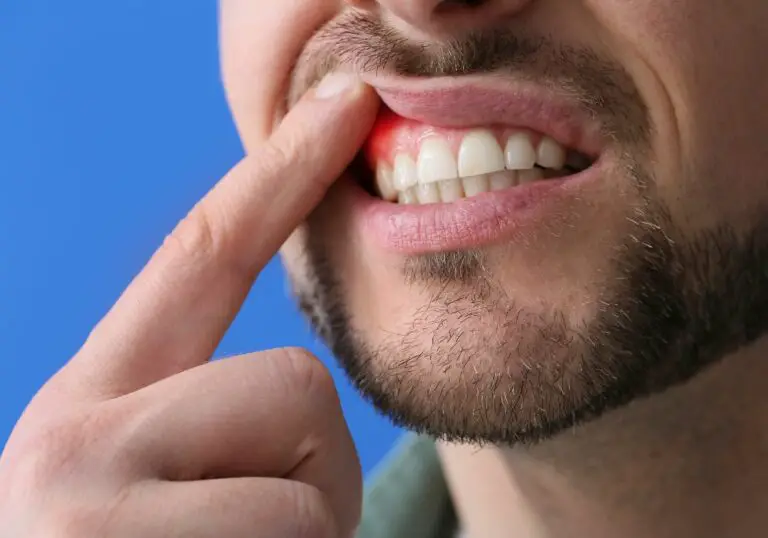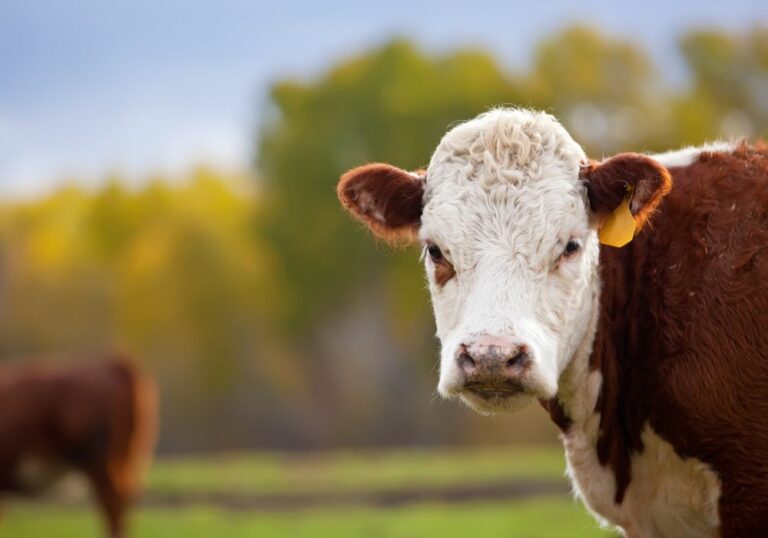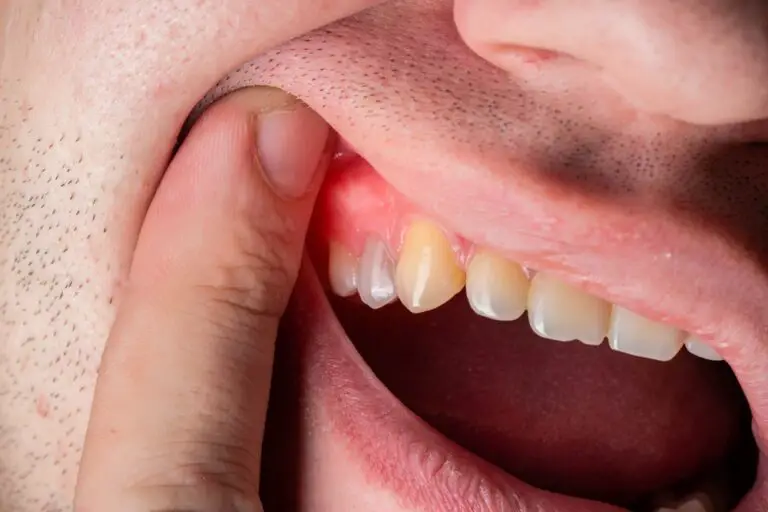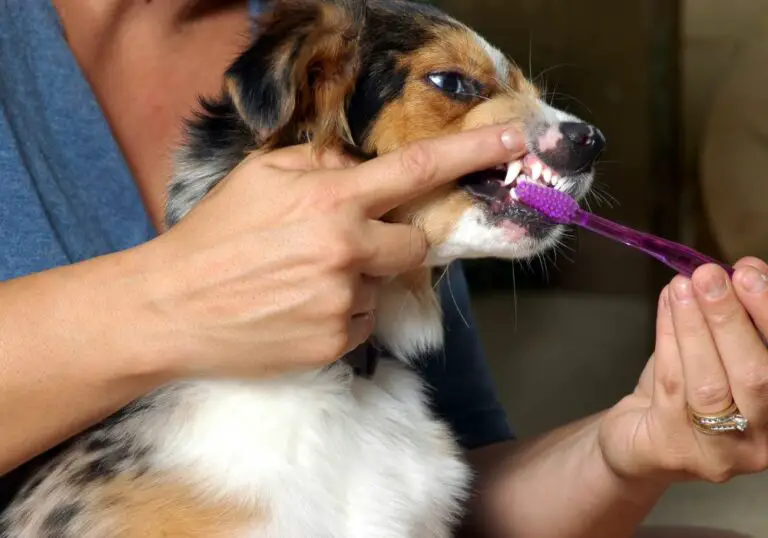Vampire teeth, also known as fangs, are not just found in supernatural lore – some people are born with fangs or develop them naturally over time. Often referred to as “vampire teeth” for their resemblance to a vampire’s fangs, there are a few ways people can develop these pointy incisors without artificial alteration. Let’s explore what causes fangs to form and if certain people are more prone to having vampire teeth.
What are vampire teeth?
Vampire teeth, or fangs, are abnormally long, pointed canine teeth. The maxillary canine teeth are located on either side of the mouth just lateral to the front incisors. Usually, the maxillary canine teeth have a rounded or square shape. However, in some cases, the canines can be extremely sharp and elongated, appearing similar to a vampire’s fangs.
While vampires in fiction are portrayed as having fangs on both their maxillary and mandibular canine teeth, real vampire teeth only affect the upper canine teeth. The lower canine teeth may be slightly more pointed than normal but do not become fangs.
Causes of naturally occurring vampire teeth

There are a few different reasons people can develop pronounced vampire-like fangs without altering their teeth:
Genetics
Some people are simply born with sharper, longer canine teeth due to their genetic makeup. This trait can run in families, with parents passing on genes for pronounced canine teeth to their children. Certain ethnic backgrounds, such as Asian and Native American populations, are more likely to have slightly elongated canine teeth as a normal genetic variant.
Environmental factors
Environmental factors during childhood can potentially contribute to the development of fangs. For example, if the baby teeth were lost prematurely, the permanent adult canine teeth may emerge as more pointed. Diseases or nutritional deficiencies during childhood tooth development can also potentially lead to abnormal shapes.
Injury or wear
In some cases, fangs may form later in life due to excessive wear or injury to the teeth. As we age, the teeth can gradually wear down and chip away, potentially leaving the canines more prominent and pointed if the surrounding teeth erode more severely. Injuries such as a broken tooth could also lead to uneven wear that makes a canine tooth appear elongated.
Who is prone to developing vampire fangs?
While anyone can be born with or develop sharpened canine teeth, certain populations are more likely to have vampire fangs:
- People of Asian and Native American descent often naturally have slightly longer and more pointed canine teeth.
- Men are more likely to have longer canine teeth than women, even before the fangs become pronounced.
- Genetic conditions such as cleidocranial dysplasia, an autosomal dominant inherited disorder, often result in abnormal retained primary teeth and permanent teeth coming in more pointed.
- Older individuals experiencing uneven tooth wear and enamel erosion over time.
- People who experienced facial injuries, tooth loss, thumb sucking or other conditions as children that disrupted their primary/permanent teeth coming in properly.
So while vampires themselves are fictional, visible fangs do occur naturally in certain people due to genetic, health and environmental factors. But how sharp are true vampire teeth?
How sharp are real vampire fangs?

While Hollywood vampires have incisors sharp enough to easily pierce skin and draw blood, real vampire fangs rarely get that razor sharp. However, they can still be notably pointed and pronounced. Here are some examples:
- The fangs may protrude visibly when the mouth is closed, unlike more rounded canine teeth.
- They can appear conical, coming to a finer point rather than having edges.
- The tips can be narrow enough to pick up a pin or paperclip. However, they are rarely sharp enough to easily pierce through skin.
- The points are generally blunt rather than being fine, sharp edges that could slice.
So most real vampire teeth have exaggerated fangs and points but not true razor-sharp edges capable of cutting and piercing like vampires in books and movies. However, these abnormally long teeth can still create a vampire-like appearance, especially if the incisors immediately surrounding the canines are worn down and less prominent. Let’s look at some examples of vampire teeth next.
Examples of real vampire teeth
To illustrate what vampire fangs can look like on real people, here are a few examples:
Minor points
Some people have canine teeth that are only slightly more pointed than average teeth. While noticeable, these small fangs are unlikely to be considered abnormal by others. They may have a subtle conical shape but no major elongation.
Moderately elongated
More pronounced vampire teeth have an obvious conical protrusion with a visibly sharp point and noticeable length. They are longer than average canines but not dramatically so.
Severely elongated
The most significant natural vampire fangs have canine teeth that are extremely long and pointy. They can protrude down well below the lower gum line when the mouth is closed. The surrounding teeth often appear worn down and uneven in comparison, making the elongated canines stand out more.
Fangs with crowding/spacing
In some cases, the fangs may be accompanied by dental crowding or spacing issues that make them more pronounced. For example, the incisors may be overlapped while the canines jut out.
So while real vampire fangs are rarely as extreme as those in fiction, they can range from subtly to severely elongated and pointed canines. But are these natural fangs just a cosmetic concern or do they cause health issues?
Potential problems of having naturally sharp canines
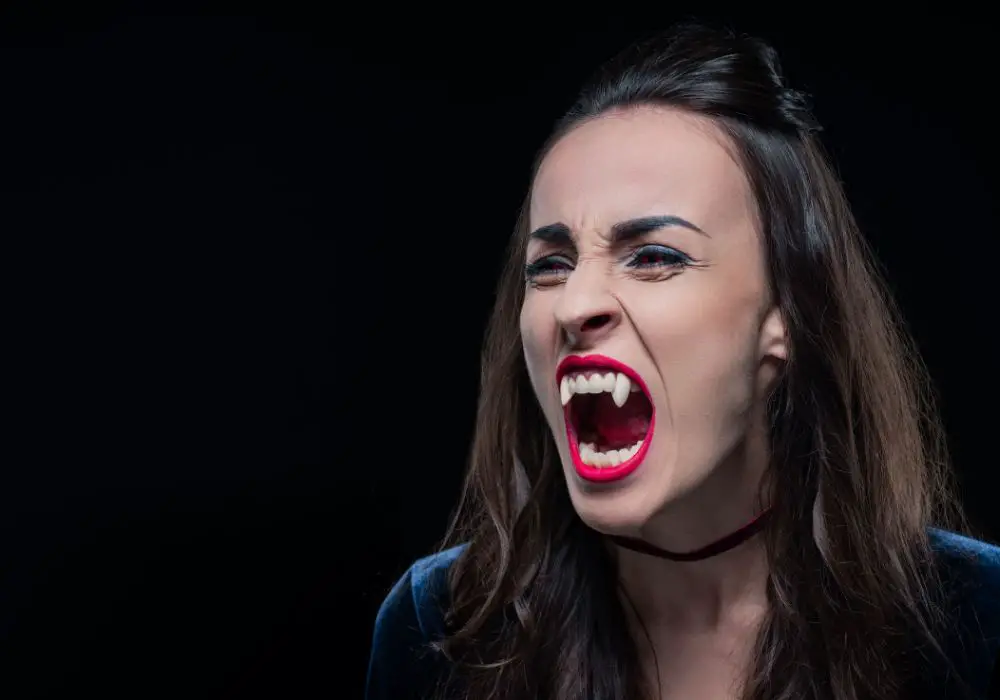
While vampires harness their sharp fangs as deadly weapons, real-life vampire teeth rarely cause any major problems. However, they can lead to some potential dental concerns including:
- Tooth sensitivity – The exposed dentin inside the thin tips of fangs can sometimes react painfully to hot or cold temperatures.
- Chipping – The fine points are prone to chipping and breaking off over time, especially if the fangs protrude substantially.
- Wearing of other teeth – Prominent fangs can sometimes gradually wear away the enamel of the surrounding teeth.
- Bone loss – In severe cases, very elongated upper fangs can gradually compromise the upper jaw bone.
- Difficulty finding dental care – Few dentists have experience with pronounced naturally occurring fangs.
- Social concerns – Some people experience bullying, teasing or unfair assumptions about their character due to pointy teeth.
However, minor to moderate vampire fangs typically pose no major risks beyond aesthetics. The most common problems are appearance concerns and potential tooth sensitivities. But should the fangs be treated?
Should naturally pointy canines be fixed?
Whether to alter natural vampire teeth comes down to a personal choice in most cases. Here are some key considerations:
- Appearance – If the fangs cause significant social stress or self-esteem issues, improving their appearance may help. However, many people choose to embrace their unique teeth rather than fixing them.
- Comfort – If the fangs are causing dental sensitivity or discomfort, dental work can potentially help minimize those issues.
- Severity – The more elongated and protruding the canines, the more they may impact biting, bone loss, wear on nearby teeth and risk of damage. Mild cases usually don’t warrant intervention.
- Risks – Tooth reshaping, crowns and other cosmetic treatments also come with risks such as tooth sensitivity and nerve damage.
Ultimately, mildly to moderately elongated fangs usually do not require treatment. But in severe cases, or if the person desires a change for cosmetic reasons, variousoptions are available.
Dental treatments for vampire teeth
If a person with naturally pointed fangs wants to reduce their prominence, a dentist may recommend:
- Tooth reshaping – The dentist can use tools like a drill, file or sandpaper to gently taper the fangs to a rounder shape. This conservatively alters their outline rather than removing large amounts of tooth.
- Dental bonding – Tooth-colored composite resins can be applied to the fangs to round off the tips or edges for a smoother appearance.
- Porcelain veneers – These thin shells of porcelain can cover prominent fangs to make them less pointy looking.
- Dental crowns – In cases of severe elongation, dental crowns may be placed over the fangs to cap them and create less protrusion.
As with any dental work, the risks and benefits should be weighed. Subtly reshaping the fangs, if desired, is generally the most conservative approach to reducing pointiness.
Frequently Asked Questions
Are vampire teeth genetic?
Genetics can play a role in natural vampire teeth, as some ethnicities tend to have slightly more elongation of the canine teeth. The trait can run in families as well. However, other factors like environment and tooth wear also influence fangs.
Do vampire teeth occur naturally?
Yes, it’s possible to develop fang-like pointed canine teeth without artificial alteration. The causes include genetic predisposition, losing primary teeth early, uneven wear, injury, and diseases/nutritional issues affecting tooth development in childhood.
Are people with sharp canines descendants of vampires?
There is no scientific evidence that having naturally occurring vampire-like teeth is associated with being descended from vampires. Vampires are fictional beings. Certain genetic traits can cause pointier canine teeth in some populations.
Are fangs dangerous?
In most cases, moderately elongated vampire teeth do not pose any major health risks and are simply an aesthetic concern. However, severely protruding fangs can sometimes contribute to problems like chipping, wear on nearby teeth, and potential bone loss in the upper jaw. Mild to moderate cases are usually harmless.
Should I fix my naturally pointy fangs?
It’s a personal choice whether to alter natural vampire teeth for cosmetic reasons. Mild cases usually require no treatment. More severe elongation or dental problems may warrant reshaping the fangs, but potential risks should be considered too. Many people choose to keep their unique fangs.
Conclusion
While not quite as sharp and intimidating as Hollywood vampires, some people do naturally develop pointy, fang-like canine teeth akin to vampire fangs. These elongated canines result from a mix of genetic predisposition, childhood environment and development, and uneven wear over time. People of certain ethnic backgrounds are more likely to have vampire teeth, as well as men and some families. Though prominent natural fangs are uncommon, they tend to pose few risks beyond potentially unattractive appearance or minor tooth sensitivities. Those with severe elongation or who wish to change their fang appearance do have cosmetic dentistry options available but may also choose to proudly embrace their vampire teeth. So while true vampires only exist in myth and fiction, real-life vampire teeth can develop without any paranormal influence!


